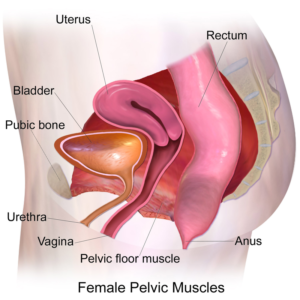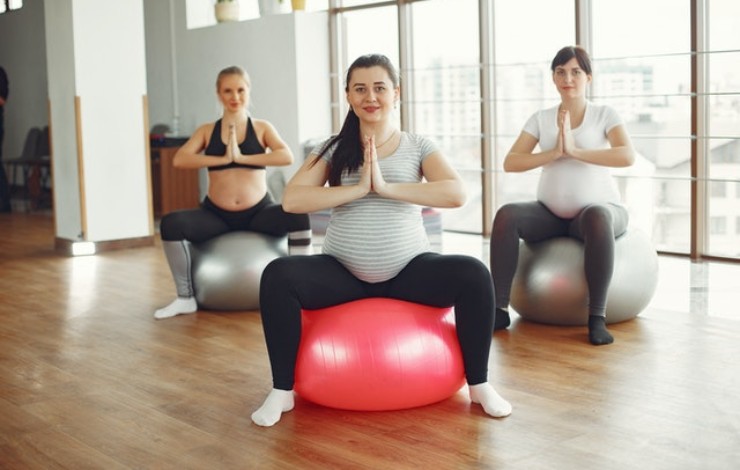Keeping Active During Pregnancy
Keeping active during pregnancy is important for both your physical and mental health, as well as the health of your baby. You may be wondering where to start and what is safe for you and your baby. Here are few tips for keeping active during pregnancy:
Consider your physical activity levels
- If you were not active prior to pregnancy now is probably not a good time to start strenuous exercise for the first time. You need to start slowly and build it up. This might mean starting with some small walks and gentle low-level strength work.
- Aim for a light to moderate level of exercise that does not make you out of breath.
- If you were active prior to becoming pregnant you can continue to exercise at 70% of your usual. As you progress through your pregnancy you may find you need to decrease this intensity further.
- Can I run? If you were running regularly prior to pregnancy, you can continue to do a light jog in moderation without exerting your body too much. If you are experiencing pelvic or lower back pain this is probably not the best type of exercise for you. If you were not running prior to pregnancy now is not the time to start. Try something less strenuous and low impact.
- Consistency with a little bit every day is better than a few strenuous workouts per week
Consider your environment
- Exercise in a comfortable environment, your body temperature is slightly higher when you are pregnant and can rise to unsafe levels if you train in the heat or places that are not well ventilated. Ensure you drink plenty of water.
Consider your baby
- Avoid contact sports where your baby can be bumped, high impact exercise that can lead to joint discomfort, changes in air pressure or risk of falling. Swimming has been suggested as the safest form of exercise during pregnancy
Be very cautious lying on your back especially after 16 weeks as it can reduce circulation, depending on the position and weight of the baby, and therefore exercises on your back should be avoided where possible.
Consider health risks
- If you have any health concerns or complications with the pregnancy you must seek advice from a medical professional prior to beginning exercise.
Examples of exercises that are less strenuous and low impact

Yoga is low impact and suitable for pregnancy.
- Walking.
- Swimming.
- Cycling – outdoors or on a stationary bicycle.
- Jogging.
- Muscle strengthening exercises, including pelvic floor exercises.
- Exercise in water (aquarobics).
- Yoga, stretching and other floor exercises.
- Pilates.
Common Issues During Pregnancy
Rectus Diastasis
- Do not put too much pressure through your rectus abdominis muscle (6 pack abdominal muscles) during pregnancy as this can increase your risk of separation of your abdominals this is known as a rectus diastisis.
- Avoid any abdominal exercises where you curl your head and shoulders up, to avoid overusing rectus abdominis.
Particularly once you’re in the second and third trimester, it’s important that you are only doing gentle abdominal exercises. - Instead, focus on using your deeper stabilising core muscles such as your transverse abdominus and pelvic floor. The pelvic floor is made up of the group of muscles that line the base of your abdomen and aids to hold everything up and in and joins with your deep core muscles to create a cavity.
Pelvic Floor Control

Image by Bruce Blaus (used under CC BY-SA 4.0 licence).
You may not see the importance of exercising your pelvic floor at this stage unless you are already experiencing concerns with leakage. During pregnancy your baby is essentially sitting on your pelvic floor causing the muscles and passive structures to stretch and lengthen. In addition to this your body is releasing a hormone known as relaxin and this causes your tissues to become increasingly stretchy preparing your body for giving birth. Due to this, it is a common problem for women to have trouble controlling their bladder after giving birth particularly when they sneeze or cough. Pelvic floor exercises will help you to keep these muscles strong throughout your pregnancy to prevent this.
- The aim is to be able to switch on your pelvic floor (imagine you’re stopping yourself from passing urine or zipping up a tight pair of jeans) and do 10x 10 second holds. If you can’t do this yet, try 5x 5 second holds and slowly build it up. (You will thank yourself once you’ve had your baby!)
- Try to be really consistent with your pelvic floor activation/strengthening exercises (these are safe to do throughout the whole pregnancy as well as after giving birth).
- These exercises are great to do when you’re sitting at the computer or driving.
- If you are having trouble working out how to activate the pelvic floor or would like a guided exercise program, book an appointment with your Physiotherapist for a one-on-one guided pelvic floor session.
SIJ/Back and Pubic Bone Pain

If you start to notice any one-sided pain through your lower back/hip region or at the front of your pubic bone, particularly when doing stairs, putting on pants, turning in bed etc., this may be a sign that you’re getting SIJ pain. Don’t worry, this is very common during pregnancy and is another effect of the hormone relaxin softening the tissues around your lower back and hips. Although this pain usually starts to settle after giving birth, to manage this pain long term you will need to strengthen through your glutes and abdominals. A few little things you can do to reduce/manage this pain is:
- Sit down to put your pants/skirt/shoes on.
- Your physio can tape across your SIJ to stabilise it as the increased movement through the joint is what causes the pain. If this helps alleviate your pain, your physio may recommend wearing an SIJ belt or SIJ compression shorts depending on your core muscle control and glute strength.
- Take stairs slowly and one step at a time, use a handrail where possible.
- Avoid any single leg exercises.
- Use an ice pack over the painful area for 10-15min at a time
The take home message:
Keep active but listen to your body and make sure you never push it over 70% of your maximum effort. Exercise should be gentle and feel good for your body.
Always get clearance from your doctor before starting an exercise program.
Our physiotherapists combine their passion and expertise to help you achieve your optimal movement and performance.
BOOK IN TODAY FOR A PREGNANCY PHYSIO SESSION


